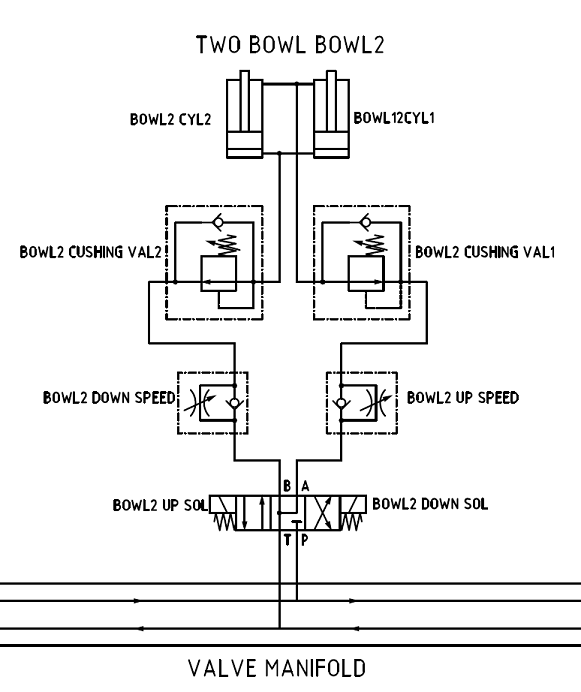SGCE412
Industrial
- Apr 26, 2017
- 1
Hello All. New here, and new to hydraulic circuit design. I would like some feedback on the cushioning valve configuration shown in the attached schematic. I'm working on a system with hydraulics that are used to lift large mixing bowls which sometimes are abruptly stopped (safety mat trigger). In all the reading and examples of how to use cushioning valves, I have yet to see a circuit as the one on this machine. Is it correct? Is it doing something I don't understand?
Note: The cushion valves themselves appear to be drawn incorrectly, in that the pressure lines are not dashed, and the valve is shown such that flow through it is the normal position.

Note: The cushion valves themselves appear to be drawn incorrectly, in that the pressure lines are not dashed, and the valve is shown such that flow through it is the normal position.

